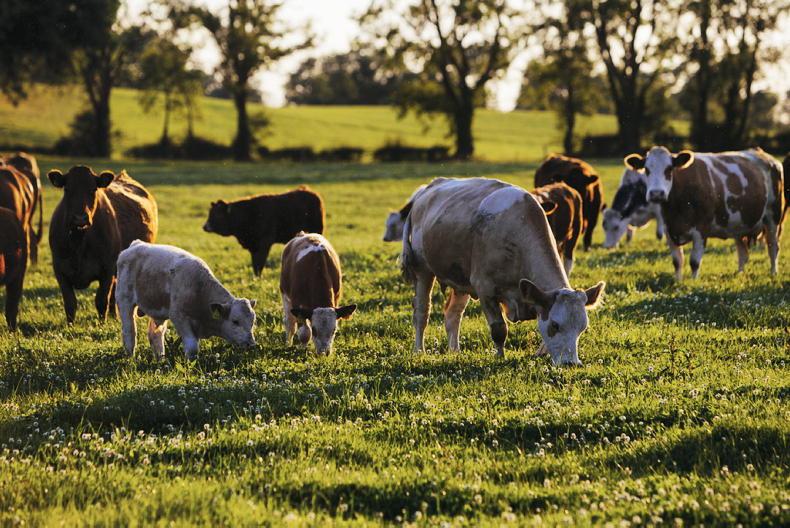Someone upstairs seemed to turn the tap on and forgot to knock it off about two weeks ago and the rainfall that ensued led to sodden paddocks and ungrazeable conditions for many farmers.
However, the outlook for the week ahead indicates a much more settled period, with some high pressure dominating, combined with some mild air temperatures.
Add in the 'grand stretch' in the evening and we should see a nice lift in growth and more stock getting turned out to grass, be it full- or part-time.
Friday 28th February saw the first of the Tullamore Farm freshly calved cows turned out to grass.
Grazing
Grazing conditions should be well improved with the coming dry weather, though caution should still be aired to prevent any significant damage to soil.
Ground will be drying from the top down at this time of the year, with ground underneath the skin of the surface probably still on the tacky side.
Strip wires are still your friend, so allocate either 12- or 24-hour blocks of grass and back-fence grazed sections to prevent damage.
As early calved cows are a month calved at this stage, their capacity to take in grass and forages has recovered, so allocation should equal 16kg DM, be that concentrates, grass or silage.
If there are some silage fields that are grazeable, then these should be the priority to get grazed off now to leave time for spreading slurry and/or chemical fertiliser and getting an early cut of grass in mid-May.
Fertiliser and slurry
With soil temperatures warming up, it may now also be a good time to get the first application of nitrogen out on to paddocks. Some 20 to 22 units of nitrogen/acre (N) in the form of urea of protected urea should suffice and can be topped up again if needs be in a few weeks.
Target anywhere that hasn’t received slurry first, as even poorer-quality slurry will have some N in it and will tip away at pushing up growth. A half-rate of N can be applied after a week to top up low-N slurry.







 This is a subscriber-only article
This is a subscriber-only article










SHARING OPTIONS: